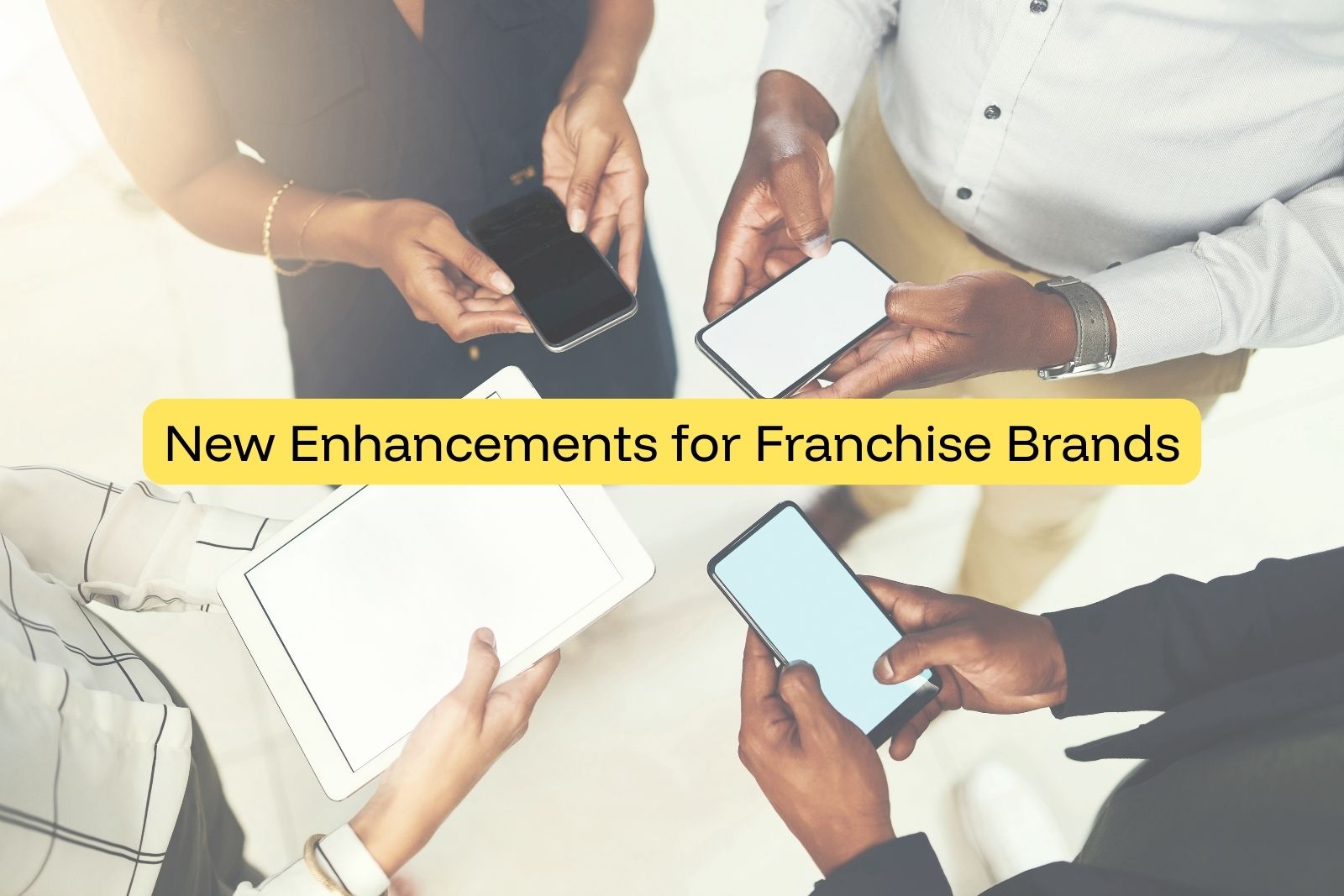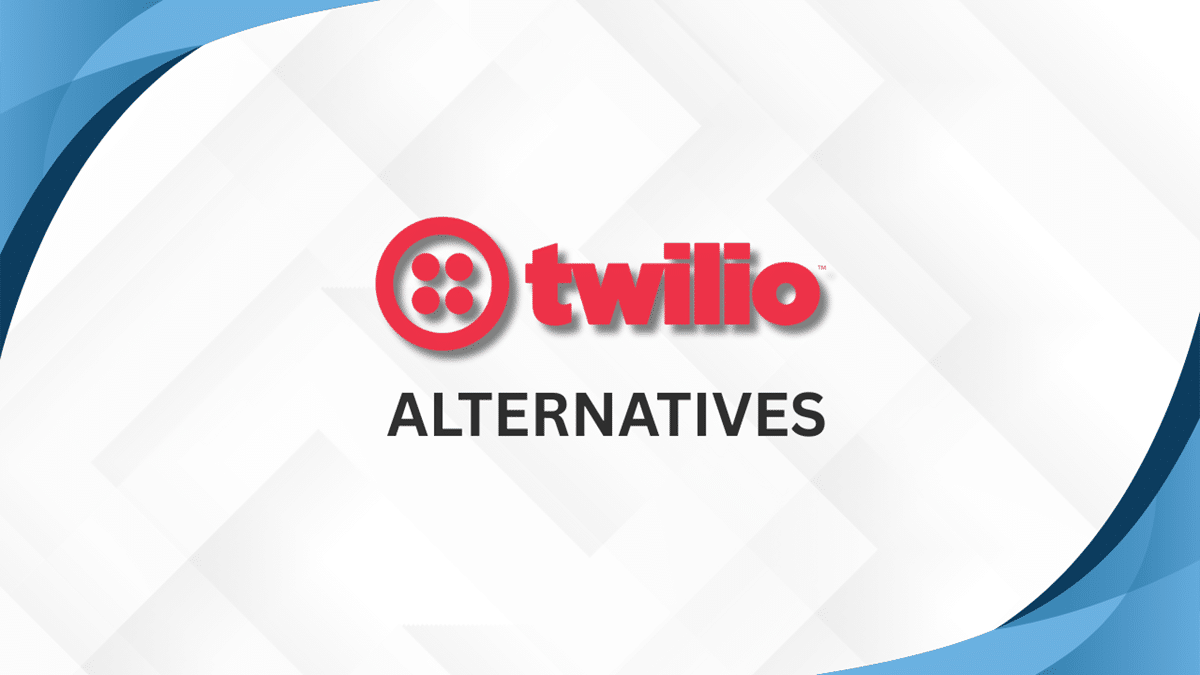
How to Build a Scalable Customer Engagement Strategy
Customer engagement is one of the most important drivers of business success, but it is also often overlooked. Many businesses spend time and resources attracting new customers, only to lose touch with them soon after.
Without a thoughtful plan, it’s easy for communication to feel random or out of sync with your customer’s needs.
This is where a clear engagement strategy that focuses on timing, relevance, and value makes a difference. You need a plan that grows with your business while still delivering personalized experiences at every stage.
In this article, you’ll learn what makes a successful customer engagement strategy and why it matters for your business. We’ll walk you through the steps to help you take control of your outreach and explain how SMS automation tools can support that strategy.
Why Is Engagement Key to Long-Term Success?
When running a business, your success doesn’t stop at making a sale. What drives long-term business growth is how well you keep your customers interested and coming back.
Engagement is what turns one-time buyers into a loyal customer base. It’s how you stay at the top of people’s minds when they are ready to make their next decision.
A strong strategy creates a two-way relationship. Instead of just sending out promotions, you open a line of communication that builds trust and earns attention over time.
It also creates opportunities for encouraging user-generated content, like reviews, testimonials, and shared experiences that strengthen your brand’s credibility.
The longer you keep them engaged, the more valuable they become to your business. This added value comes from repeat purchases, upsells, renewals, and referrals.
People trust businesses that treat them well and keep them informed. Therefore, you need a strategic plan and the right tools to help personalize outreach and follow up without missing key moments.
How to Build a Winning Customer Engagement Strategy
Success comes from the small, steady steps you take to keep your customers engaged with your brand. These are the main areas you should focus on to build stronger connections and improve long-term customer loyalty:
Understanding Your Audience
If you’re trying to keep existing customers engaged, the first thing you need is clarity on who you’re talking to.
You need to know what your customers’ preferences are, how they make decisions, and what kinds of communication they respond to.
Are they motivated by convenience, trust, or price? Do they appreciate reminders or find them overwhelming?
You can start with the customer data you already have and look at how customers interact with your website. You need to pay attention to what they buy, how often, and when they tend to drop off. This customer behavior tells a story that you can learn from and use.
But behavior alone doesn’t give the whole picture. Feedback matters too, and this is where real-time outreach can help.
Textellent lets you collect feedback via SMS. After a purchase, delivery, or appointment, you can send a survey via text asking how everything went. This supports prioritizing customer engagement by making listening part of your daily workflow.
Omnichannel Communication
Some of your customers will check emails during a break, while others prefer phone calls or in-app messages. This is where multiple channels become essential.
You have to be present across communication channels, so your customers can reach you and hear from you in the way they prefer. When done right, omnichannel communication helps you stay visible without being intrusive.
Among all the channels, SMS has one of the highest engagement rates. People read texts within minutes and don’t get stuck in spam folders or get overlooked in inboxes. That’s why SMS works exceptionally well for reminders, confirmations, and brief updates.
Textellent makes it easy to add SMS to your strategy. You can schedule appointment reminders, send SMS campaigns, follow up after visits, and manage two-way customer conversations.
It also helps you stay within legal requirements for business texting by managing opt-ins and preferences for each contact. This supports better outcomes when tracking your customer engagement score and ensuring your outreach is always welcomed.
Personalized Experiences
When customers receive messages that feel relevant to their needs, they’re more likely to pay attention and take action. That’s why personalization plays a key role in effectively engaging customers.
But personalization doesn’t mean just putting a first name into a message. It means showing that you personalize interactions based on their relationship with your business.
When you use customer data the right way, you can send relevant messages and offers. This could be based on their last purchase, their location, their interests, or the questions they’ve asked.
Textellent makes customization simple to manage, even at scale. You can create text campaigns that include unique customer details like their name, last visit date, service type, or even a special offer based on their history.
You can also build SMS drip sequences, such as a welcome series for new users or a re-engagement campaign for inactive ones. Each message is delivered at the right time, with content that reflects the entire customer journey.
Consistent Brand Messaging
Every message your customer receives says something about your business.
When your tone, values, and voice remain steady across email, SMS, social media platforms, and in-person interactions, customers begin to trust your brand more.
Your voice should be familiar, reflect your values, and meet customer expectations.
Textellent supports consistent messaging through features that allow your team to share branded templates, automate message timing, and sync with your existing calendar or CRM tools.
If you’re confirming an appointment, following up after a visit, or checking in on inactive clients, the message still reflects your professional brand voice and strengthens customer interactions.
Customer Feedback Loops
Feedback helps you grow. When this becomes a normal part of how your business operates, it shows customers that their voice matters.
Feedback loops don’t need to be formal. What’s most important is that you listen, act, and follow up. In a competitive market shaped by market trends, this flexibility helps you adapt based on real insight.
Here’s how a complete feedback loop works:
- Ask for feedback: Right after a service, delivery, or interaction
- Review what’s said: Look for patterns, suggestions, or problems
- Take action: Adjust your process, fix what’s broken, or reinforce what works
- Follow up: Thank customers for their feedback and tell them what changed
When customers know that their words lead to action, they become more engaged. They’re more likely to respond again in the future and more likely to remain loyal over time.
Types of Customer Engagement Strategies
Every business has different ways of connecting with its audience. However, all effective customer engagement strategies share the goal of keeping people involved and responsive.
The more you understand when and how to use them, the easier it becomes to create a system that keeps customers active and loyal.
Proactive Engagement
This type of strategy focuses on starting the conversation. Instead of waiting for customers to come to you with a question or complaint, you anticipate their needs and reach out first.
Examples include:
- Sending onboarding instructions right after someone signs up
- Sharing appointment reminders before the customer has to ask
- Alerting customers to changes, delays, or updates without them needing to check in
Proactive engagement creates confidence. It shows customers that you’re thinking ahead and that their time and experience matter, which increases customer lifetime value.
Reactive Engagement
Reactive engagement is about what happens after a customer contacts your business. This could be through a support request, a reply to a campaign, or a service issue.
How fast you respond and how helpful you are can make or break the experience.
Even though this type of engagement happens in response to something, it’s still part of your overall strategy. It’s where your brand’s voice, values, and reliability get put to the test.
Textellent supports two-way SMS marketing, so if a customer replies to a reminder or has a question, your team can respond right away.
You can assign team members to manage replies, see complete message histories, and respond without switching tools.
Transactional Engagement
There are many small moments when a customer interacts with your brand, including receipts, confirmations, and updates. These messages may seem routine, but they’re often the most opened and noticed.
The mistake many businesses make is treating these moments as robotic. But they’re a perfect opportunity to add a slight human touch.
A simple thank-you, a friendly tone, or a specific next step can turn a plain update into effective customer engagement.
Re-Engagement
Re-engagement is your way of reaching out with the purpose of reminding customers why they chose you in the first place and giving them a reason to come back.
In this kind of strategy, you don’t need to be pushy for a sale. Instead, you need to reconnect with empathy and offer value.
Here are a few common re-engagement approaches:
- A friendly reminder after a missed booking or delayed order
- A personal check-in asking how things are going since their last visit
- A time-sensitive offer that rewards loyalty or encourages a return
- A helpful update that shows you’re still thinking about their needs
With Textellent, you can send scheduled messages and segment customers based on inactivity. It also gives you visibility into who opened the message and who responded to help optimize your customer engagement metrics.
Community-Driven Engagement
Community-driven engagement is about building a space where your customers feel like they’re part of something beyond the product. It forms emotional loyalty, which lasts longer than any promotion or one-time discount.
You don’t need a large following or expensive tools to create this. It can be as simple as giving your customers a way to interact with your brand or with each other.
It might include things like a small referral program, early access to new releases, or inviting your most loyal customers to a private feedback group.
While community engagement often happens outside of SMS, Textellent can still support it. You can invite customers to join your referral program, share a review, or RSVP to virtual events via a simple text. These prompts support ongoing customer engagement efforts.
Why SMS Is a Powerful Channel For Customer Engagement
If you want to improve how you communicate with customers, SMS remains one of the most effective tools. It continues to deliver results in reach and response that make it the best choice for customer experience across the full journey.
Most customers carry their phones with them throughout the day. In fact, 98% of SMS messages are opened, far exceeding the average open rate for email.
This makes SMS helpful in sharing essential updates, confirming appointments, sending reminders, or following up after a visit. It also plays a strong role in engaging customers effectively, especially when timing and relevance matter most.
Texting for business marketing delivers solid financial performance as well. On average, businesses see a return of $71 for every $1 spent on SMS marketing.
This makes it one of the most cost-effective ways to stay connected with your customers while supporting broader engagement goals.
SMS also makes room for real conversations. When your customers can reply to your messages, you can gather input or assist without needing to redirect them elsewhere. Two-way communication helps strengthen relationships and build trust over time.
Because SMS is built on simplicity, it is also easier to manage than many other outreach methods. You do not need a large team or a complicated setup to run an effective messaging strategy.
Textellent Helps Power Your Customer Engagement Strategy
The strength of a good customer engagement strategy lies not just in how often you reach out, but in how well each message fits the moment.
Unlike many communication platforms, Textellent is purpose-built to support the full customer journey, with tools that focus on retention, personalization, and conversion. It’s built to help you engage customers in ways that feel natural and purposeful.
Engagement Starts With Recognition
Customers want to feel known. Textellent supports this by using your existing business phone number whenever possible. When customers receive texts from a number they recognize, they’re more likely to respond and stay connected.
If shared short codes are used, the response still routes through a real number, rather than an anonymous string of digits. That helps your brand maintain a personal feel, even as you scale your outreach.
Conversations That Begin and Continue With Purpose
Textellent helps you engage from the start. When a lead comes in, the platform can send a personalized text immediately, opening the conversation while their interest is still fresh.
From there, you can create drip campaigns that match your goals, such as getting them to book, visit, or buy. Each message reflects the customer’s preferences, history, or last action to keep the communication aligned and relevant.
Engagement Through Real Appointments
If you run a business where appointments drive revenue, Textellent turns SMS scheduling into a key part of your engagement strategy.
Compared to basic booking tools, Textellent allows you to send helpful texts before and after the visit. This includes confirmations, intake forms, day-of reminders, and post-visit follow-ups for reviews or rebooking.
These thoughtful details also reduce customer acquisition costs by helping you retain customers who are already familiar with your brand.
You can also use this process to request customer surveys, giving your clients a chance to share their thoughts and offer insight you can use to strengthen the relationship.
Messaging That Matches Customer Intent
Every message you send is a chance to strengthen the relationship. But not every message should go to everyone.
With tagging and segmentation tools, Textellent helps you group your audience based on their actions, preferences, or history. These targeted messages lead to higher customer satisfaction when timing and relevance are aligned.
Visual Messaging to Keep Engagement Fresh
Some messages work better when they include more than text. Textellent supports Multimedia Messaging Service (MMS), so you can add images that showcase a product, explain a process, or add a more personal touch.
Combined with ready-to-use templates for both text and image messages, you can send content that’s on-brand and impactful without having to build everything from scratch.
It keeps your engagement strategy from feeling repetitive and contributes to exceptional customer experiences.
Adaptable to Your Setup (With or Without Integration)
Your engagement tools should work with the systems you already use. But they shouldn’t depend on them.
That’s why Textellent supports strong integration options if you want full automation, while also functioning perfectly well as a standalone tool.
If you run a lean operation or have a larger setup, the platform adjusts to your workflow.
Reliable Compliance Features
Textellent includes built-in tools that help you manage SMS compliance without disrupting your communication flow. It tracks opt-ins, manages opt-outs, and keeps clear records of customer permissions.
The system also respects legal texting limits without applying blanket restrictions that aren’t required. You can control how and when messages are sent while staying aligned with TCPA rules, all within one platform.
It helps you protect your brand and maintain trust without slowing down your strategy.
Turn Engagement Metrics Into Business Results
A strong SMS customer engagement strategy depends on knowing what’s working.
With Textellent, you can access detailed reports on opens, responses, clicks, and customer actions. These insights tie to customer success, whether it’s a confirmed appointment, completed purchase, or renewed interest.
Insights help you identify what your audience is responding to and where your outreach may need adjustment. With a clear view of performance, you can improve customer satisfaction and continue building more effective customer relationships.
Deliver Consistent Customer Engagement With Textellent!
Customer engagement works best when every interaction feels intentional. You have to guide each customer through their experience with care and consistency.
The way you communicate shapes how your business is remembered. Textellent helps you achieve that from start to finish.
Textellent allows you to deliver timely, personalized messages that align with each stage of the customer journey. You can send intake forms before appointments, follow-up messages after a visit, and create automated text flows based on customer actions.
Textellent gives you the foundation to manage conversations with purpose and keep customers involved across every stage. Sign up for a free trial or request a demo consultation today!
FAQs About Customer Engagement Strategy
What is an example of a customer engagement strategy?
A great example of a customer engagement strategy is sending automatic text reminders and follow-ups to stay in touch after a customer makes a purchase or schedules a service.
For example, sending a thank-you message the next day, followed by a check-in later in the month, helps keep your brand relevant without overwhelming the customer.
This kind of communication works well when it’s based on purchase history, allowing you to tailor messages to what each customer values most. When it feels personal, you create stronger connections and support more personalized engagement.
What are the 4 P’s of customer engagement?
The 4 P’s are often used to describe the key drivers of engagement:
- Personalization – Making each interaction feel unique and providing relevant content
- Proactivity – Reaching out before the customer asks
- Presence – Being available on the channels your customers use
- Purpose – Making every message meaningful, not just promotional
A strategy built around these principles becomes more than a communication habit. It strengthens your customer engagement plan and gives each touchpoint a role in building trust and loyalty.
What is a customer engagement strategy?
A customer engagement strategy is the plan your business follows to build and maintain relationships with your customers. It includes how and when you reach out, which channels you use (like email or SMS), and what kind of messages you send.
A well-planned strategy helps you stay aligned with your goals while also measuring customer engagement through real-world results like open rates, replies, or repeat purchases.
It also provides a framework to provide valuable feedback to your internal teams, so they can improve service and adapt to customer preferences.
What are the 3 C’s of customer engagement?
The 3 C’s are:
- Connection – Building emotional ties with customers through consistent, thoughtful interaction
- Communication – Keeping the conversation open with updates, support, and follow-ups
- Consistency – Delivering reliable experiences across every touchpoint
Platforms that support SMS, email, and social media engagement together help you meet those expectations more easily.
When these are part of your process, you’re able to track key metrics more accurately and focus your efforts where they matter. Engaged customers tend to respond more often, stay longer, and refer others when they feel seen and heard.
This also helps prevent customer churn where preferences shift fast, and the changing customer expects quick, thoughtful service.





